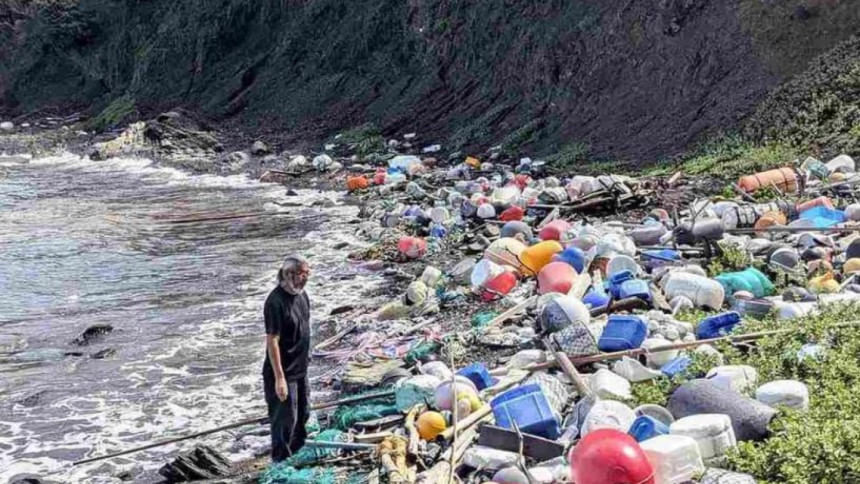Plastic waste from Asia inundates Sea of Japan coastline

Marine waste that has drifted over from other Asian countries is causing problems in prefectures along the Sea of Japan (East Sea). Intergovernmental negotiations held in Switzerland until Aug 15 sought to establish the world's first treaty on preventing pollution, but ultimately failed to reach an agreement, prompting concerns over delays in taking action against serious plastic pollution.
At the same time, Japan itself is one of the world's largest generators of plastic waste and is being urged to take steps to keep oceans clean.
Plastic containers and bottles have covered the western coastline of Tsushima in Nagasaki Prefecture, about 50km from Busan. "No matter how many times we collect them, they keep washing ashore whenever there's heavy rain or a typhoon," said tour guide Shoko Sakata, 45.
According to city estimates, 30,000 to 40,000 cubic m of drifting garbage reaches Tsushima annually. More than half is plastic products, with 54 per cent of the plastic bottles collected in 2024 coming from China and Taiwan, and 38 per cent from South Korea.
According to the Organisation for Economic Cooperation and Development, about 20 million tonnes of plastic waste ends up in the global environment each year. About 90 per cent of that comes from developing countries, with improper waste control cited as the main cause.
Japan is planning to provide technical assistance to Asian countries and elsewhere to establish waste sorting and collection systems, and has set a target of training 10,000 personnel in charge of waste control. However, reducing drifting waste ultimately depends on the efforts of the countries that generate it.
"International rules are needed to restore clean beaches," said Michinao Suenaga, 54, a board member of the Tsushima Coast and Aquatic Preservation Programme Association, which engages in beach clean-ups.
In contrast, an Environment Ministry survey in fiscal year 2023 found that most of the plastic bottles that washed ashore along the coasts of the Pacific Ocean and the Seto Inland Sea were domestic in origin. Ehime University professor Hirofumi Hinata, who specialises in coastal physical oceanography, attributed this to ocean currents and wind.
"Some of the plastic waste flowing into the Pacific Ocean eventually reaches countries like the United States," he said.
Japan ranks second in the world, after the United States, in its generation of plastic packaging waste per capita – 32kg per year as of 2015.
The public and private sectors are working to reduce the amount of plastic waste.
Kirin Holdings, for example, promotes label-free bottles and has vowed to "contribute to the realisation of a circular economy" and the "reduction of environmental impact".
The Plastic Resource Circulation Law, which came into effect in 2022, requires convenience stores, hotels, restaurants and other businesses to formulate plans to reduce the volume of plastic products they provide. However, penalties apply only to large businesses, resulting in limited efforts by small operations.
A Tokyo restaurant owner who uses plastic straws said: "Plastic is cheaper, and customers strongly prefer it, so we can't switch to paper."
Plastic exposed to ultraviolet rays and wind breaks down into tiny fragments called microplastics, which are less than 5mm in size. Consuming fish that ingested microplastics is feared to pose health risks to humans.
"We will keep encouraging countries to participate in discussions towards the establishment of a treaty, while promoting effective initiatives both domestically and internationally," a senior Environment Ministry official said.

 For all latest news, follow The Daily Star's Google News channel.
For all latest news, follow The Daily Star's Google News channel. 



Comments